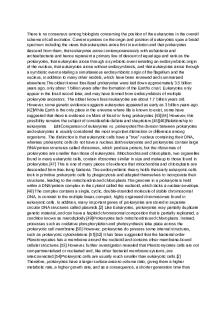5 - Lecture notes 5 PDF

| Title | 5 - Lecture notes 5 |
|---|---|
| Author | Kevin Shah |
| Course | Intrnet&Higher; Layer Pro |
| Institution | New Jersey Institute of Technology |
| Pages | 4 |
| File Size | 68.5 KB |
| File Type | |
| Total Downloads | 89 |
| Total Views | 183 |
Summary
Chapters discussed...
Description
CS 656003 Lecture Note 16/10/2017 Middle term Time: 30/10/2017 1:00 pm 20 points
Principles of reliable data transfer What the function to output the data to the channel? Outstream.write however, write is not reliable.
Finite State Machine (FSM) We use FSM to specify sender, receiver. How many state for a telephone? 1. Of 2. Dial Tone 3. In Call 4. Busy Transfers: pick-up, hang-up, dial
rdt1.0
underlying channel perfectly reliable
no bit errors
no loss of packets
separate FSMs for sender, receiver:
sender sends data into underlying channel
receiver reads data from underlying channel
Muliple packets while getting response in http
How to recover form errors?
acknowledgements (ACKs): receiver explicitly tells sender that pkt received OK
negative acknowledgements (NAKs): receiver explicitly tells sender that pkt had errors
sender retransmits pkt on receipt of NAK
ACK: Send the next packet NAK: Resend the packet
rdt2.0 fatal flaw: What happens if ACK/NAK corrupted?
rdt2.1 Wait for call 0 from above Wait for ACK or NAK 0 Wait for call 1 from from above Wait for ACK or NAK 1
pattern: 1010 Why is rdt2.1 safe? It stop and wait.
How do receiver handles duplicates? corrupted ACK will trigger resending So, send ACK for the last packet again.
rdt2.2 is simplified, uses ACKs only. explicitly include seq # of pkt being ACKed
What to do when one receives a corrupted packet? send ACK for the previous packet
rdt3.0--channels with errors and loss The key is timer. What to do when ACKs get lost? resend the packet When do the receiver use a timer? Want to enhance throughput
rdt3.0 performance Send out multiple packets at the same time. pipelining: sender allows multiple, “in-flight”, yet-to-be-acknowledged pkts
Important IPs NJIT BANG 10.200.5.17 smtp.njit.edu 128.235.5.18 NJIT wireless 10.200.*.* NJIT wired 128.235.*.*
+The IP address of the same domain should have the same beginning. POP port 110 IMAP port 143 SMTP port 25
AFSCONNECT has 2 IP addresses 128.2.35.* 10.80.0.11 Why? virtual interfaces
FTP TCP control connection port 21 FTP TCP data connection port 20
+465 is the secured SMTP port, it needs SSL handshake.
https://kb.ucla.edu/articles/why-cant-i-send-e-mails-to-uclaedu-addresses above link for ucla mail server security facts....
Similar Free PDFs

5 - Lecture notes 5
- 4 Pages

Lesson 5 - Lecture notes 5
- 22 Pages

5 Statehood - Lecture notes 5
- 4 Pages

Prokaryotes 5 - Lecture notes 5
- 2 Pages

5. Conduct - Lecture notes 5
- 4 Pages

Chapter 5 - Lecture notes 5
- 15 Pages

Chapter-5 - Lecture notes 5
- 6 Pages

Chapter 5 - Lecture notes 5
- 83 Pages

Tutorial 5 - Lecture notes 5
- 3 Pages

Chapter 5 - Lecture notes 5
- 4 Pages

Imagen 5 - Lecture notes 5
- 1 Pages

Quiz 5 - Lecture notes 5
- 11 Pages

Chapter 5 - Lecture notes 5
- 20 Pages

Chapter 5 - Lecture notes 5
- 4 Pages

5. Emotions - Lecture notes 5
- 8 Pages

Tema 5 - Lecture notes 5
- 10 Pages
Popular Institutions
- Tinajero National High School - Annex
- Politeknik Caltex Riau
- Yokohama City University
- SGT University
- University of Al-Qadisiyah
- Divine Word College of Vigan
- Techniek College Rotterdam
- Universidade de Santiago
- Universiti Teknologi MARA Cawangan Johor Kampus Pasir Gudang
- Poltekkes Kemenkes Yogyakarta
- Baguio City National High School
- Colegio san marcos
- preparatoria uno
- Centro de Bachillerato Tecnológico Industrial y de Servicios No. 107
- Dalian Maritime University
- Quang Trung Secondary School
- Colegio Tecnológico en Informática
- Corporación Regional de Educación Superior
- Grupo CEDVA
- Dar Al Uloom University
- Centro de Estudios Preuniversitarios de la Universidad Nacional de Ingeniería
- 上智大学
- Aakash International School, Nuna Majara
- San Felipe Neri Catholic School
- Kang Chiao International School - New Taipei City
- Misamis Occidental National High School
- Institución Educativa Escuela Normal Juan Ladrilleros
- Kolehiyo ng Pantukan
- Batanes State College
- Instituto Continental
- Sekolah Menengah Kejuruan Kesehatan Kaltara (Tarakan)
- Colegio de La Inmaculada Concepcion - Cebu